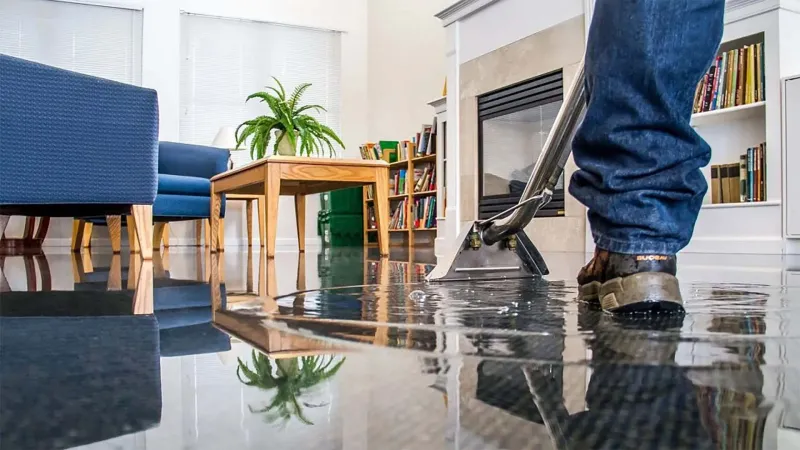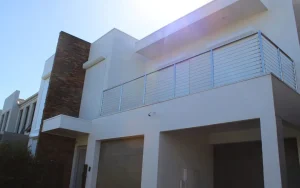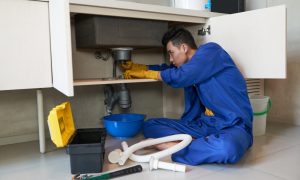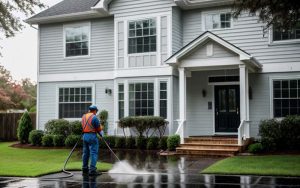Reclaiming Spaces: Proven Methods For Water Damage Repair

Water damage is a homeowner’s nightmare, capable of wreaking havoc on properties and turning once-comfortable living spaces into damp, mold-infested environments. Water damage requires immediate and effective action to stop additional degradation and restore the impacted areas to their original splendor, regardless of the source (natural calamities like floods or plumbing leaks).
In this comprehensive guide, we delve into the proven methods for water damage repair, exploring the steps homeowners and restoration professionals can take to reclaim spaces and revitalize properties after water-related disasters.
A Comprehensive Guide To Water Damage
It is essential to recognize the various forms of water damage before discussing possible solutions. There are three distinct types of water damage that are determined by the pollution level:
Category 1: Clean Water –
Clean water from sources like damaged supply lines, faucets, or precipitation is used in this kind of water damage. Category 1 water poses minimal health risks.
Category 2: Gray Water –
There are toxins in gray water that could get you sick if you drink it. Sources of gray water include discharge from dishwashers, washing machines, or sump pump failures.
Category 3: Black Water –
Black water is highly unsanitary and contains pathogenic agents and other harmful substances. This is a common consequence of sewage overflows, stream or river floods, or stagnant water that has fostered the proliferation of microbes.
Additionally, the degree of saturation and the rates of evaporation are used to categorize water damage into other groups:
Class 1: Minimal Water Intrusion –
The least amount of water, with absorption and evaporation affecting only part of a room or area.
Class 2: Significant Water Intrusion –
Water has affected an entire room, including carpeting and cushioning, with moisture wicking up walls.
Class 3: Extensive Water Intrusion –
Water saturates ceilings, walls, insulation, and subflooring, requiring extensive restoration.
Class 4: Specialty Drying Situations –
These involve highly porous materials like hardwood, concrete, or plaster that require specialized drying methods.
Proven Methods For Water Damage Repair
Assessment And Inspection:
Thoroughly assessing the impacted areas is the initial stage in any water damage restoration effort. Finding out how much water was damaged, where it came from, and what kind of water it is are all part of this process. Professionals use moisture meters, infrared cameras, and hygrometers to assess moisture levels and identify hidden water pockets.
Water Extraction:
Prompt water removal is crucial to prevent further damage and mold growth. Powerful pumps, wet/dry vacuums, and extraction mats are used to remove standing water from floors, carpets, and other affected surfaces.
Drying And Dehumidification:
After water extraction, the drying process begins. Dehumidifiers and industrial-grade air movers are utilized to reduce humidity levels and accelerate the evaporation process. This prevents secondary damage and mold growth.
Cleaning And Sanitization:
Once the affected areas are dry, thorough cleaning and sanitization are essential to remove contaminants and prevent microbial growth. Non-porous surfaces are cleaned with antimicrobial solutions, while porous materials may require specialized cleaning methods.
Structural Repairs:
Structural components damaged by water, such as drywall, insulation, and flooring, may need to be repaired or replaced. This technique restores the building’s visual appeal while ensuring its structural integrity.
Mold Remediation:
In order to avoid health risks and additional damage, mold growth needs to be dealt with quickly. Mold remediation involves containing the affected area, removing contaminated materials, and applying antimicrobial treatments to prevent recurrence.
Restoration And Reconstruction:
Returning the damaged regions to their original state before the damage occurred is the last step in water damage repair. This may involve painting, replacing flooring, repairing drywall, and restoring any other damaged components.
Preventing Future Water Damage
While effective water damage repair is essential, preventing future incidents is equally important. To prevent water damage to their homes, homeowners should take the following steps:
Regular maintenance of plumbing fixtures, appliances, and roofing.
A backup generator and sump pump will be installed to keep the basement dry.
Ensuring proper grading and drainage around the property.
Adding insulation to pipes so they don’t freeze and burst in the winter.
Conducting routine inspections for signs of water leaks or moisture intrusion.
Conclusion
Water damage can cause significant disruption and distress for homeowners, but with the right methods and expertise, affected spaces can be reclaimed and restored to their former glory. By understanding the nature of water damage, employing proven repair methods, and implementing preventive measures, homeowners can minimize the impact of water-related disasters and enjoy peace of mind, knowing their properties are well-protected against future incidents.







